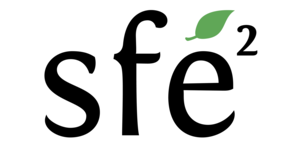Project presentation (February 2025 – July 2025)
I am seeking a student or volunteer to process camera trap pictures to identify nest predators of an Australian burrow-nesting passerine, the Spotted Pardalote (Pardalotus punctatus). The student will assist with processing data collected during 2 field seasons (2023-2024 and 2024-2025) as part of my PhD project on the breeding ecology and the parental behaviours of the Spotted Pardalote.
Nest predation significantly affects bird reproductive success, fitness, and population stability. The nest predators of the Spotted Pardalote are not well known.
Nest predator identification data is collected by placing a camera trap in front of the birds’ burrow from the first day of laying. The camera traps are set so that they take pictures every fixed interval (1 or 5 minutes depending on the models) and when triggered by the movement of a warm animal. By doing so, I expect to be able to identify both endothermic and exothermic predators. Thus, the methods used to identify nest predators generate large amounts of photo data and require significant processing time. New methods are rapidly emerging in the field of ecology to facilitate data processing, many of which are based on machine learning. Therefore, the selected candidate must identify the most suitable tools for the available data and integrate these tools into an efficient workflow.
The University is in Geelong, Victoria. The data was collected in Brisbane Ranges National Park (VIC).
Requirements to participate
– Positive communication and teamwork skills
– Interest in ornithology and/or in behavioural ecology
– Hard work and high motivation
– BSc, Honours or MSc degree in related fields
– Interest in programming
– Ability to code in R and/or Python
– Commitment of at least 3 months to the project, candidate willing to commit for longer periods will be favoured
Compensations
The position in unpaid. However, I offer free shared accommodation and an allowance for groceries (meals) for the volunteer (pending funding).
References
Norouzzadeh MS, Morris D, Beery S, Joshi N, Jojic N, Clune J. A deep active learning system for species identification and counting in camera trap images. Methods Ecol Evol. 2021;12:150–161. https://doi.org/10.1111/2041-210X.13504
Vélez, J., McShea, W., Shamon, H., Castiblanco-Camacho, P. J., Tabak, M. A., Chalmers, C., Fergus, P., & Fieberg, J. (2022). An evaluation of platforms for processing camera-trap data using artificial intelligence. Methods in Ecology and Evolution, 00, 1–19. https://doi.org/10.1111/2041-210X.14044

Commentaires récents